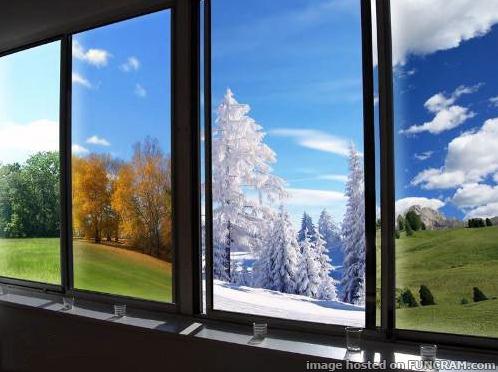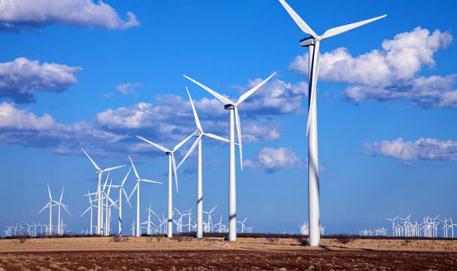70 F. high yesterday in the Twin Cities.
73 F. average high on September 14.
83 F. high on September 14, 2015.
Where else on Earth can you experience 98 degrees and flurries on the same day?
September 15, 1939: Minneapolis experiences a daily record high of 98.
September 15, 1916: St. Paul receives their earliest recorded snowfall.

In Search of Weather Perfection? Good Luck.
You should see the e-mails I get: “Sunday was one of those glorious Minnesota days. My wife asked me, what location has weather like Sunday for the longest period? We are packing & calling Max Zinn to sell our condo. We will determine our destination upon your reply.” Sincerely, Judd Anderson.
Judd, I’m a little partial to North Korea, but Delta doesn’t fly there yet, so let’s move on to other options.
Southern California and Arizona come to mind for consistent sunshine & warmth, but between traffic, water shortages and brush fires I’d seriously consider New Mexico. Santa Fe might work.
Maui is a weather-dream but all tropical destinations are prone to hurricanes, which make Minnesota winters look tolerable.
Frost was reported early Wednesday from the Brainerd Lakes to the Arrowhead. A surge of rain arrives tonight and early Friday – a stray instability shower Saturday gives way to warm sunshine Sunday. 70s and 80s return next week; ECMWF guidance hinting at more heavy T-storms late next week.
Hey Judd, I still like Florida, but I wouldn’t dream of buying a home on or near the water.

Another Round. When in doubt – predict rain. Odds are you’ll be right, at least this year. 4km NAM guidance shows the best chance of showers and T-storms this evening and tonight; a few straggling instability T-showers possible into Friday. 60-hour Future Radar: AerisWeather.
Heaviest Rains Fall Tonight. Models print out anywhere from .39″ to .96″ additional rain by Saturday. The 00z NAM model forecasts .75″ of rain for the Twin Cities. Graphic: Aeris Enterprise.
August Hangs On. ECMWF (European) model data shows temperatures trending above average into the end of next week with a few days above 80F. No frost in or near the metro looking out 10 days or so. Meteogram for MSP: WeatherBell.
We Just Had Five 1,000 Year Floods In Less Than a Year. What’s Going On? Here’s a clip from Environmental Defense Fund: “…So how do we explain that in the span of just five months, the United States logged no fewer than four deadly 1,000-year floods in states as widespread as Texas, West Virginia, Maryland and Louisiana – following a 1,000-year-flood that ravaged South Carolina last October. It appears that the calculation of a 1,000-year event may no longer be the most accurate statistic. It was based, as are our increasingly common 100-year natural disaster events, on data from the past. We may, in other words, already have shifted so far into a new climate regime that probabilities have been turned on their head…”
Photo credit: Flickr. “Water engulfs a home in a neighborhood in Minot, N.D., June 23. As many as 10,000 residents, about one-fourth of the city’s population, have evacuated as the fast-rising Souris River inundates thousands of homes and businesses. The deluge from the Souris River is expected to exceed that of the city’s historical 1969 flood, making this the region’s worst flooding in four decades.” 3rd Combat Camera Squadron. Photo by Staff Sgt. Sharida Jackson.
Fasten Your Seat Belt – Turbulence Is On The Rise. I had no idea, but yes, it’s probably a good idea to leave your seat belt fastened (all the time). Here’s an excerpt at The Guardian: “…Williams said that at heights of around 10 to 12km (6-7 miles), a typical cruising altitude for a modern passenger jet plane, temperature changes caused by increased amounts of carbon dioxide in the atmosphere have the effect of making different layers of airflow move at increased speeds relative to each other. When this unstable airflow produces clear-air turbulence – and there are no visual clues to give a pilot warning of what lies ahead – then the aircraft is thrown about with considerable force. “If the effect is severe, it will overcome the force of gravity and fling people out of their seats. Turbulence of this severity is being encountered by planes thousands of times a year now,” Williams added. In the United States alone, it is estimated that the damage, delays and disruption from turbulence already cost more than $500m (£374m) a year...”
File credit: Shutterstock.
NOAA: Expect More Extreme Floods In The Future. Gizmodo has details: “Extreme, catastrophic flood events like the one that swamped Louisiana last month are becoming more likely because of climate change, according to a hot-off-the-press analysis by the National Oceanic and Atmospheric Administration (NOAA). The study found that the record rainfall responsible for last month’s epic floods-the worst natural disaster to hit the United States since superstorm Sandy-was made at least 40 percent more likely by global warming. The researchers arrived at that conclusion by applying a new but increasingly popular statistical approach called “weather attribution.” Details of the analysis, which is currently under peer review, can be found in the open-access journal Hydrology and Earth System Sciences…”
File photo credit: Associated Press.
Birds Inside the Eye of Hurricane Hermine and 13 Other Weird Things That Have Shown Up on Radar. Here’s a clip from The Weather Channel: “As Hurricane Hermine made landfall along Florida’s Gulf coast, radar detected an interesting phenomenon: birds trapped flying inside the calm eye of Hermine. The birds were detected using differential reflectivity from NOAA’s Dual-Polarization radar. This particular radar feature can be used to detect non-meteorological radar echoes such as birds and insects, in addition to its normal precipitation detection function. We’ve seen this occur one other time in recent years during another U.S. hurricane landfall. Birds were detected on radar in the eye of Arthur as it moved near the coast of North Carolina in 2014…”
Image credit: “Base reflectivity (left) and Differential reflectivity (right) radar images of Hermine at 10:38 p.m. EDT on Sept. 1. The red shaded area on the image to the right shows the birds swirling inside Hermine’s eye just before landfall.”
Data Is Better When It’s Hyper-Local. Kudos to Hennepin West Mesonet for a denser grid of data and some great visualizations. Unlike current airport observations that update hourly, these observations update every MINUTE. Check it out!
Debate Rises Over Real Source of Higher Methane Emissions. Here’s the intro to a story at Scientific American: “The jury is still out on the culprit behind the recent increase in global methane emissions. A new study published yesterday found that fossil fuel production has emitted significantly more of the potent greenhouse gas since 2000 and could account for much of the unexplained uptick in global atmospheric methane since 2007. That is an opposite finding from other recent research, which has blamed sources like agriculture, animal husbandry and wetlands instead…”
Photo credit: MATTHEW BRITTON Flickr

How Do We Get Off Fossil Fuels When We’ve Always Feared Change? How do we (or our kids) learn to embrace change and disruption, building it into their products, services and careers? We’re not as open to change as we might like to think, according to an article at Grist: “…The predictable slobbering over each new Apple gadget proves we’re infatuated with technology, right? Not according to Calestous Juma, a professor of international development at Harvard. In his new book, Innovation and its Enemies, Juma argues that our infatuation is limited to new versions of established technologies, and that people generally oppose anything that feels too new. We may be addicted to our media-consumption devices now, but even the birth of mass media was met with staggering resistance. People scoffed at it as a low-brow corruption of the literary arts and rulers banned it in several places...”

Does Renewable Energy Raise Electricity Prices? The answer may surprise you, according to Renewable Energy World: “…The average increase in prices between the 20 states that had the most investment in renewable energy was 4.3 percent, when comparing the average from 2010 to 2015 with the average over the last 18 months. However, for the 20 states that had the least investment in renewable energy, the average increase was 4.6 percent.** Therefore, the impact of renewable energy on the price of power appears to be statistically insignificant. Sticking with fossil fuels has not been a pathway to lower energy prices. And this result challenges critics’ assertions that renewable energy is simply too expensive, while fossil fuels will maintain reliable, inexpensive electricity prices…”
Meet New Glenn, The Blue Origin Rocket That May Someday Take You To Space. Sign me up! Details via The New York Times: “Blue Origin, the secretive space company created by Jeffrey P. Bezos, offered a look at its newest rocket design on Monday — and, by extension, its ambitions to make space travel more frequent and inexpensive. Both the rocket and the ambitions appear to be big. The rockets, named New Glenn after John Glenn, the first American to orbit the Earth, are almost as large as the Saturn V rocket that NASA used from 1966 to 1973, before rockets started being built smaller. The two-stage version that could venture to low-Earth orbit will be 270 feet tall, and the three-stage version, which could fly outside Earth’s orbit, will be 313 feet tall…”
Image credit: “The rockets, named New Glenn after John Glenn, the first American to orbit the Earth, are almost as large as the Saturn V rocket that NASA used from 1966 to 1973.” Credit Blue Origin.
America’s Trust in Media Hits All-Time Low. Dylan Byers reports at CNN Money: “In a climate of bitter political partisanship, anti-media rhetoric and diversified media options, just 32% of Americans now say they trust the media “to report the news fully, accurately and fairly” — the lowest level since 1972, when Gallup began polling. “Now, only about a third of the U.S. has any trust in the Fourth Estate, a stunning development for an institution designed to inform the public,” Gallup said in its press release. While Americans’ faith in media has been in decline for over a decade, this year’s findings represent a sharp drop from the previous eight years, when between 40 and 45 percent of Americans expressed trust...”
The Illustrated Map of America’s Worst Utopias. It’s Utopia Week at Atlas Obscura: “There are many who want to believe that a utopia—a perfect society, an ideal world—can exist. Even in America. Yet, as quickly as leaders eagerly build utopias, they often crumble in a glorious heaping mess. Some fall to sex scandals, others toil in hunger, while many are struck with bad luck. From nudist colonies to bioterrorist cults, we map and explore six of the most disappointing and unfortunate utopias in the United States…”
Map credit: Michelle Enemark.

TODAY: Dry start with early sun, then increasing clouds, late PM rain. Winds: SE 10-15. High: 73
THURSDAY NIGHT: Rain likely, heavy at times. Low: 63
FRIDAY: Humid with peeks of sun, stray T-shower risk. Winds: S 10-15. High: 77
SATURDAY: More sun, isolated PM shower possible. Winds: NW 10-15. Wake-up: 59. High: 72
SUNDAY: Breezy with warm sunshine. Winds: S 10-15. Wake-up: 55. High: 79
MONDAY: Some sun, passing T-storm. Winds: S 8-13. Wake-up: 62. High: near 80
TUESDAY: Sunny, warm and pleasant. Winds: S 10-20. Wake-up: 61. High: 83
WEDNESDAY: Touch of July, late-day thunder? Winds: SW 10-20. Wake-up: 64. High: 85
Climate Stories…
Climate Change “Significant and Direct” Threat to U.S. More hype from the liberal media? Not this time. Here’s an excerpt from Reuters: “The effects of climate change endanger U.S. military operations and could increase the danger of international conflict, according to three new documents endorsed by retired top U.S. military officers and former national security officials. “There are few easy answers, but one thing is clear: the current trajectory of climatic change presents a strategically-significant risk to U.S. national security, and inaction is not a viable option,” said a statement published on Wednesday by the Center for Climate and Security, a Washington-based think tank. It was signed by more than a dozen former senior military and national security officials, including retired General Anthony Zinni, former commander of the U.S. Central Command, and retired Admiral Samuel Locklear, head of the Pacific Command until last year…”
Image credit: “Specialist Marquise Bessellieu of the SC National Guard checks on residents along flooded Long Avenue in Conway, South Carolina, Oct. 5, 2015.” REUTERS/Randall Hill.
* More perspective from The Center for Climate & Security.
Arctic Sea Ice Cover Set To Be Second Lowest Ever Recorded, Data Suggests. Here’s more information from The Guardian: “Arctic sea ice cover could be confirmed within days as the second lowest ever recorded, the latest data suggests. According to the US national snow and ice data centre (NSIDC) the ice which forms and disperses annually has been close to its minimum extent for the year for several days and has begun to grow again as autumn sets in. It was measured by satellite as 4.169m sq km on 12 September, a slight increase on the 4.139m sq km on 11 September. As the Arctic winter closes in, the ice cover will climb, reaching around 15m sq km by March…”
Image credit: “For most of the year, the Northwest Passage is impassible but in this image taken on 9 Aug 2016 a path of open water can be traced along most of the distance from the Amundsen Gulf to Baffin Bay.” Photograph: VIIRS/Suomi NPP/NASA.
We Have a Whole World of Evidence on Climate Change. Here’s an excerpt of an Op-Ed from The Atlanta Journal-Constitution: “…Every month since last October has been the hottest such month ever recorded, and once the data are final, August may become the 11th consecutive month to join that list. The evidence doesn’t stop there. Last year, 2015, was the hottest year ever recorded globally. The previous champion had been 2014. According to Gavin Schmidt, climatologist and director of the NASA Goddard Institute for Space Studies, there’s a 99 percent chance that 2016 will top both of them, producing three consecutive years of record heat globally...”
Indians Are Rioting Over Water. Is This a Glimpse Into The Future? In all probability, yes. The battle for clean, reliable, freshwater supplies is just beginning. Here’s an excerpt at The Washington Post: “…Disputes over control of water supplies are not uncommon around the world. Egypt, Sudan and Ethiopia have quarreled for years over dams and other water-control measures along the Nile. In the United States, the Colorado River is at the center of a tug-of-war between the needs of agriculture and growing cities. India is now the latest flash point in water-use battles, which some experts believe could become more acute worldwide as climate change boosts temperatures and influences weather patterns…”
Image credit: “The Indian city of Bengaluru, in Karnataka state, is under curfew after violent protests broke out in the area over the sharing of river water with neighboring Tamil Nadu state.” (Reuters).
Donald Trump’s Newest Adviser Says Global Warming is a Huge Threat to National Security. Details via Mother Jones: “Former CIA Director R. James Woolsey has signed on as a senior adviser to Donald Trump—even though the two men’s views are oceans apart on an issue very close to Woolsey’s heart: climate change. For years, the former CIA director has been an advocate for cleaner energy and has called for addressing global warming from a national security perspective. He argues that our current energy sources put us at “the whims of OPEC’s despots” and make us more vulnerable to terrorist attacks. He wants the United States to shift from its reliance on coal and oil to renewables and natural gas...”
Photo credit:
A large crack in an Antarctic ice shelf has grown by 13 miles in the past six months, threatening to detach an area of ice larger than Delaware. Images of the Larsen C shelf captured by NASA’s Terra satellite show a fault line that now stretches 80 miles in length, according to a report from the U.S. space agency. A portion of the ice shelf—the continent’s fourth largest—could disconnect Scientists are working to understand the immediate changes that created the giant crack—and have led it to grow so quickly. Project MIDAS, a U.K. group dedicated to studying the Larsen C shelf, notes that a warming climate has changed the structure of the ice, threatening the possibility of collapse…”
Image credit: Jesse Allen—NASA Earth Observatory images. “The rift is visible on the left in these images taken by the Multi-angle Imaging SpectroRadiometer (MISR) on NASA’s Terra satellite on Aug. 22, 2016, The ice shelf comprises the left half of the image, and thinner sea ice appears on the right.”
One of the biggest concerns about climate change is the effect it will have on agriculture. Many studies have suggested that rising temperatures could be harmful to farms around the world, although there’s plenty of uncertainty about how bad things will get and which food supplies we should worry about most. Now, a new study published Monday in Nature Climate Change reiterates concerns that wheat — the most significant single crop in terms of human consumption — might be in big trouble. After comparing multiple studies used to predict the future of global crop production, researchers have found that they all agree on one point: rising temperatures are going to be really bad for wheat production...”
Climate Change Risk Is, Believe It Or Not, A Major Risk To Your Investments. So says Jesse Moore at Seeking Alpha: “…While I don’t believe that fossil fuels are going away anytime soon, and I am a big proponent of natural gas, I also think that the carbon risk priced into the market is barely visible. Investors need to take a serious eye to the long-term political and economic risks and consider deleveraging to fossil fuels, whether they believe it is a problem or not. Every company on the market has some carbon footprint, and while investing in green technology has historically been a poor performing asset class, investing in green companies in a diversity of sectors has not.”

